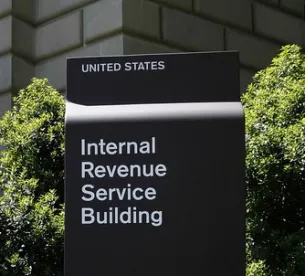Participants in dependent care assistance programs (DCAPs) will get the best of both worlds (at least in 2021) under new guidance from the Internal Revenue Service (IRS).
In another of what appears to be a seemingly endless list of unexpected events that have occurred since early 2020 as a result of the COVID-19 pandemic, the IRS in Notice 2021-26 clarifies rules relating to the tax treatment of DCAP carryovers and extended grace periods pursuant to the Consolidated Appropriations Act, 2021 (CAA), and the enhanced DCAP contribution limits under the American Rescue Plan Act of 2021 (ARPA). Below are several key takeaways from the new guidance.
Carryovers and Extended Grace Periods
Following the passage of the CAA, there was a concern that unused DCAP amounts that became usable in a later year due to a carryover or extended grace period may not be excludable from the participant’s gross income. In short, Section 129 of the Internal Revenue Code limits the amounts that may be excluded from income pursuant to a DCAP (generally, $5,000), and this limit was not modified by the CAA. Accordingly, because Section 129 did not contemplate the CAA’s carryovers or extended grace periods, these funds could have been includable in a participant’s income if the participant received more than $5,000 in DCAP reimbursement in one year. Perhaps in response to these concerns, Congress increased the 2021 DCAP limit to $10,500 in connection with the passage of the ARPA, which ensured that participants would not be taxed on unused DCAP amounts from 2020 that were used in 2021.
The notice gives participants the best of all worlds. According to the notice, not only may a participant carry over the full unused amount from 2020 and use that amount in 2021 tax free, the participant also may elect to contribute up to $10,500 in 2021, resulting in a total non-taxable benefit of up to $15,500 from the DCAP in 2021.
Plan Year vs. Calendar Year
The notice clarifies that the $10,500 limit established in the ARPA is available only for 2021. For plans that operate on a calendar year, the result is straightforward: a participant should use the full $10,500 in the 2021 plan (calendar) year and, as discussed above, may use the unused amount from 2020 without any adverse tax consequences.
However, for non-calendar plan years, the result is more complicated. Example 2 of the notice indicates that a participant with $15,500 in DCAP benefits ($5,000 carried over from 2020 and $10,500 contributed for the 2021 plan year) as of the beginning of the plan year on July 1, 2021, will lose the benefit of the enhanced $10,500 limit if the participant does not incur sufficient expenses from July 1, 2021, through December 31, 2021. Employers that allow participants to elect the increased amount for 2021 may want to ensure that participants are aware that amounts in excess of the regular $5,000 limit will lose preferential tax treatment if they are not used in 2021. Depending upon when the beginning of the plan year occurs (or when the employer allows a mid-year election change), the 2021 increase may not be helpful to plan participants.
Nondiscrimination Testing
Prior IRS guidance indicated that unused DCAP amounts that are available in a subsequent year due to a carryover or an extended grace period would not be included for purposes of nondiscrimination testing in the year of the carryover or grace period. Accordingly, an employer need not be concerned that adopting the carryover or grace period provisions will affect testing. However, the notice does not provide for nondiscrimination relief for the enhanced contributions in 2021. Accordingly, employers may want to monitor their DCAPs in 2021 for highly compensated participants taking advantage of this enhanced limit in a manner that may raise issues under nondiscrimination testing.





 />i
/>i
